Rock Used in Nottingham City Centre Buildings
| ✅ Paper Type: Free Essay | ✅ Subject: Sciences |
| ✅ Wordcount: 1703 words | ✅ Published: 23 Sep 2019 |
Rock Used in Nottingham City Centre Buildings
Contents Page
4. Newton Building – Limestone cladding
5. Newton Building – Sandstone
1.1. The purpose of this report is to investigate the natural rock material used in the construction of a selection of Nottingham City centre buildings. A visual investigation of the external rock material was carried out for each of the buildings, highlighting and describing the materials features.
1.2. Nottingham is home to numerous historic buildings that were constructed using various rock materials, encompassing all three rock types (sedimentary, metamorphic, and igneous), many of which were locally sourced, and some coming from as far as Finland.
1.3.  Below is a map of Nottingham City centre, highlighting the locations of the buildings which form this investigation.
Below is a map of Nottingham City centre, highlighting the locations of the buildings which form this investigation.
Figure 1. Map of Nottingham City centre buildings that have been investigated (Open Street Map, 2019)
-
Arkwright Building
-
 Located on Shakespeare street in the North-West of the city, the Arkwright building is a grade II listed building which was constructed in 1881. Originally built to accommodate the University College Nottingham, the city library, and natural history museum, the building is now part of the Nottingham Trent University campus along with the neighbouring Newton building (also grade II listed) (Nottingham Trent University, 2018). In 2009, the two buildings went under major redevelopment in a £90 million project which saw considerable changes and improvements to the facilities that the university has to offer, including the construction of the universities first secured, open space known as the Arkwright quadrangle. (Arup, 2005)
Located on Shakespeare street in the North-West of the city, the Arkwright building is a grade II listed building which was constructed in 1881. Originally built to accommodate the University College Nottingham, the city library, and natural history museum, the building is now part of the Nottingham Trent University campus along with the neighbouring Newton building (also grade II listed) (Nottingham Trent University, 2018). In 2009, the two buildings went under major redevelopment in a £90 million project which saw considerable changes and improvements to the facilities that the university has to offer, including the construction of the universities first secured, open space known as the Arkwright quadrangle. (Arup, 2005)
- The Arkwright building is designed in a Victorian gothic style, using a sedimentary rock of limestone blocks. Also known as Ancaster Stone, this rock is sourced locally from Ancaster, Lincolnshire and was formed during the Jurassic period.
-
The rocks original colour is beige, though due to the age of the building, it has taken on a slightly darker, weathered look. As the rock is sedimentary and contains no crystals, Ancaster Stone is dull with a slightly rough, gritty texture with small amounts of possible layering, though this could also be discolouration of the rock. The very fine grains within the rock are difficult to distinguish with the naked eye, however under 20x magnification, the rock pores and areas of dissolution are visible (see figure 4). The majority of the blocks used to construct the building are cuboids and approximately 200 mm x 600 mm in size.
Figure 2. Arkwright Building (January 2019)
-
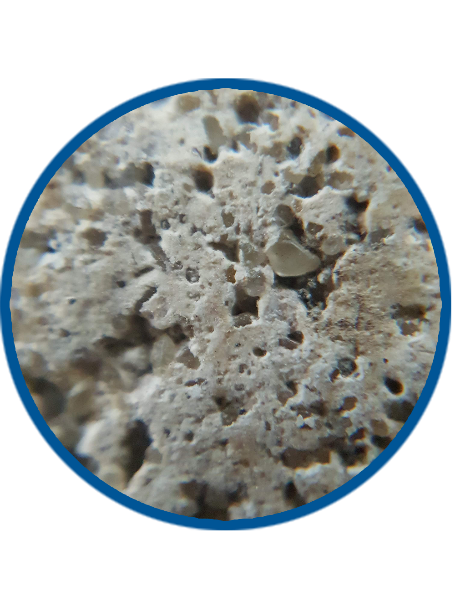 Due to the age of the building, there are areas which have weathered, however this is mainly superficial weathering consisting of discolouration (figure 5.) and minor dissolution of rock. Limestone is susceptible to dissolution and can be completely dissolved by rainwater and soil water if allowed to enter fissures and cracks, therefore considering the age of the building, the level of weathering is minimal.
Due to the age of the building, there are areas which have weathered, however this is mainly superficial weathering consisting of discolouration (figure 5.) and minor dissolution of rock. Limestone is susceptible to dissolution and can be completely dissolved by rainwater and soil water if allowed to enter fissures and cracks, therefore considering the age of the building, the level of weathering is minimal.
-
Figure 3. Limestone blocks, Arkwright Building (December 2018)
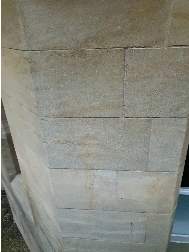
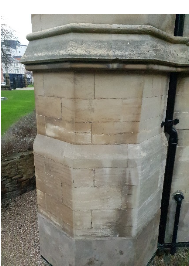
Figure 4. 20x magnification of limestone block (January 2019)
Figure 5. Weathering on limestone blocks, Arkwright building (December 2018)
-
St. Andrews Church
- Located on Goldsmith Street, the St. Andrews Church is a grade II listed building. The Church was constructed in the 1860’s using dolomitic limestone (Bulwell limestone) for the majority of the building, with intermittent decorative layers of a silty limestone (Scunthorpe mudstone).
-
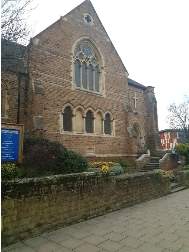 Appearing all over the world, dolomitic limestone is a sedimentary rock, containing between 10% – 50% of dolomite (mineral) when compared to ordinary limestone. Dolomitic limestone is thought to be formed during the post depositional alteration of lime mud and limestone by magnesium-rich groundwater (King, 2005). Dolomitic limestone is used similarly to ordinary limestone, with similar hardness, colour ranges, and ability to neutralise acids.
Appearing all over the world, dolomitic limestone is a sedimentary rock, containing between 10% – 50% of dolomite (mineral) when compared to ordinary limestone. Dolomitic limestone is thought to be formed during the post depositional alteration of lime mud and limestone by magnesium-rich groundwater (King, 2005). Dolomitic limestone is used similarly to ordinary limestone, with similar hardness, colour ranges, and ability to neutralise acids.
- The dolomitic limestone used to construct the St Andrews Church is a combination of red and brown, which is dull with a rough texture. The very fine grains are not visible to the naked eye, however under 20x magnification, grains are visible (See figure 8). The blocks used are approximately 150 mm x 300 mm, with some layering visible and identified by the varying colours.
-
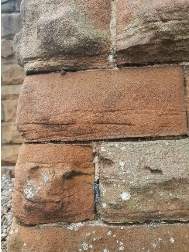 The weathering that is visible on the Church is mainly discolouration of the rock, which is likely due to the buildings age. The blocks used to construct the building are irregularly shaped, though it is unknown as to whether this was intentional or the result of surface weathering of the rock.
The weathering that is visible on the Church is mainly discolouration of the rock, which is likely due to the buildings age. The blocks used to construct the building are irregularly shaped, though it is unknown as to whether this was intentional or the result of surface weathering of the rock.
- The Scunthorpe mudstone used in the decorative courses is beige in colour and has a dull, slightly rough surface with no visible grains or layering. The only weathering visible is minor discolouration which is likely due to the effects of weather.
Figure 6. St Andrews Church (January 2019)
Figure 7. Dolomitic Limestone blocks, St. Andrews Church (December 2018)
Figure 8. 20x magnification of Dolomitic Limestone blocks (December 2018)
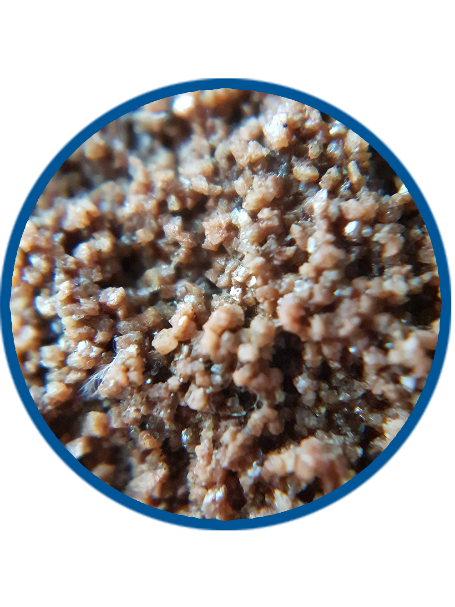

4.1. The Newton building was constructed in 1958, forming part of an expansion of the University College Nottingham campus. Since its construction, the Newton building has achieved a grade 2 heritage status, alongside the neighbouring Arkwright building.
4.2. The cladding used on the main building is made of a type of limestone called Portland Stone. Portland Stone is a sedimentary stone which was formed during the Jurassic period and is quarried in Dorset.
Figure 9. Newton Building (January 2019)
4.3. The Portland Stone is a pale grey colour, with a relatively smooth, dull surface texture. The size of each panel is approximately 200 mm x 600 mm and are all uniform in shape, with an even surface finish. Some of the lower level cladding panels have visible weathering, most likely dissolution of the stones surface (see figure 10), along with some stone discolouration.
4.4. There are no visible grains on the cladding panels, though at 20x magnification, some grains are visible. The magnification also provides an insight into how the surface of the limestone is affected by dissolution weathering (see figure 11).


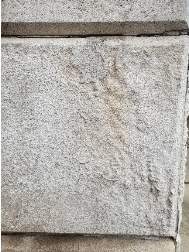
Figure 9. Limestone cladding on the Newton Building (December 2018)
Figure 10. Limestone weathering (December 2018)
5. Newton Building – Sandstone
5.1. On the south side of the Newton building, adjacent to Burton Street, the lower courses of the building are constructed out of a dark coloured Sandstone called Millstone Grit.
Millstone Grit is a sedimentary rock, formed during the carboniferous period and can be found across northern England, Wales and northwest Ireland.
5.2. The Millstone Grit used in the lower courses of the Newton building is medium to dark beige/brown in colour, with a rough, dull, gritty surface texture.
The Sandstone has coarse, visible grains, which are particularly noticeable under 20x magnification (see figure 14).
5.3.
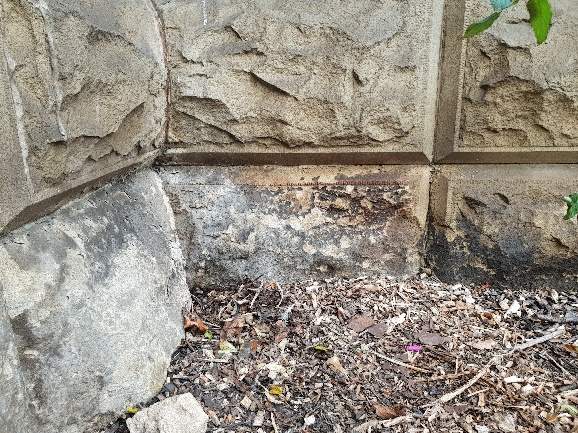

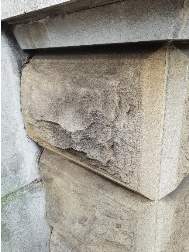
References
-
Historic England, 1995. Arkwright Building, Nottingham Trent University. [Online]
Available at: https://historicengland.org.uk/listing/the-list/list-entry/1255017
[Accessed 02 12 2018]. -
King, H. M., 2005. Dolomite. [Online]
Available at: https://geology.com/rocks/dolomite.shtml
[Accessed 03 01 2019]. -
Nottingham Trent University, 2018. Newton and Arkwright. [Online]
Available at: https://www.ntu.ac.uk/study-and-courses/courses/our-facilities/newton-arkwright
[Accessed 03 01 2018]. -
Open Street Map, 2019. [Online]
Available at: www.openstreetmap.org
[Accessed 03 01 2019].
Cite This Work
To export a reference to this article please select a referencing stye below:
Related Services
View allDMCA / Removal Request
If you are the original writer of this essay and no longer wish to have your work published on UKEssays.com then please click the following link to email our support team:
Request essay removal


